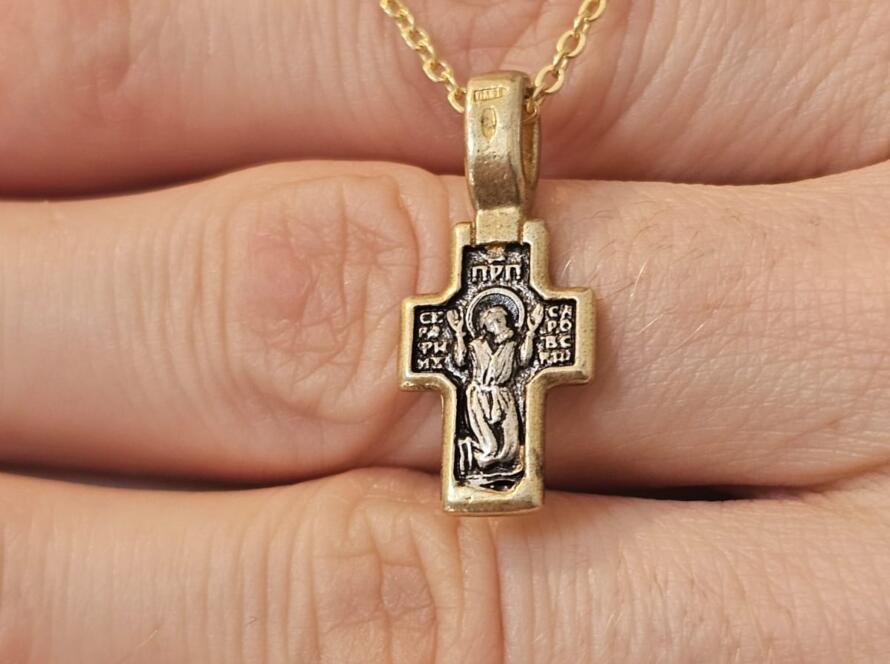Summary
Holy Water
Holy Water: A Comprehensive Guide to History, Liturgy, and Modern Use for Full Digital Exposure
Holy Water is a fundamental sacramental in Christianity, especially within the Catholic, Orthodox, and Anglican traditions. It is ordinary water that has been blessed by a priest, bishop, or deacon, consecrating it for sacred purposes. This extensive guide provides an in-depth exploration of its origins, theological meaning, practical uses, and modern accessibility.
📜 Part 1: Where Does Holy Water Come From? (Origins and History)
The use of blessed water for ritual purification precedes Christianity, but the Christian tradition developed a unique theological context for its use.
A. Pre-Christian Roots: Purification and Aversion
The practice of using water for spiritual cleansing is rooted in ancient traditions:
-
Jewish Purification: Jewish ritual law mandates washing (ablutions, mikveh) for purification from ritual impurity. This tradition emphasizes water as a necessary agent for spiritual readiness, not just physical cleanliness.
-
Pagan Practices: Many ancient Mediterranean and Near Eastern pagan cults used water mixed with salt or herbs to purify temples, worshippers, and sacrificial objects, often for apotropaic (evil-averting) purposes.
B. The Christian Theological Foundation
Christian Holy Water finds its theological basis not in paganism, but in the New Testament and the early Church’s understanding of baptism and creation.
-
The Baptism of Christ: The blessing of water is linked directly to Christ’s baptism in the River Jordan, sanctifying all water for spiritual use. This association highlights water’s role as a symbol of spiritual rebirth and cleansing.
-
Early Church Practice: The earliest documented use of blessed water appears in the second century, mentioned in the Apostolic Constitutions and other early Church writings. It was initially a simple blessing over ordinary water, often incorporating salt to symbolize incorruptibility and wisdom (referencing the prophet Elisha purifying bitter water with salt, 2 Kings 2:19-22).
-
Exorcistic Function: As the Church grew, Holy Water took on a distinctly exorcistic function, used to dispel evil spirits and purify people, objects, and places from demonic influence. This power is explicitly prayed for in the blessing rites.
🛠️ Part 2: How is Holy Water Made? (The Liturgical Process)
The creation of Holy Water is a formal liturgical service, not a casual blessing. The specific ritual and prayers confer the sacramental power upon the water.
A. The Traditional Roman Rite (Extraordinary Form)
Historically, the most detailed and powerful rite involves the separate blessing of salt and water before their combination:
-
Exorcism and Blessing of Salt: The priest first performs an Exorcism of Salt, praying that God would cleanse the salt of all impurity and make it an agent of healing and protection against all power of the enemy. Following this, the salt is blessed.
-
Exorcism and Blessing of Water: Similarly, the priest performs an Exorcism of Water, asking God to cleanse the water of all evil influence and make it a means for the expulsion of demons and the healing of diseases. The water is then blessed.
-
Combination: The priest combines the exorcised and blessed salt into the water, typically saying: “Commistio salis et aquae pariter fiat” (Let the mixing of salt and water be made). The salt symbolizes incorruptibility, wisdom, and the preservation of grace.
-
Final Prayers: The priest concludes with a final prayer over the mixture, sanctifying it for its spiritual purposes.
B. The Modern Roman Rite (Ordinary Form)
The modernized rite, often used today, is simpler but retains the essential elements:
-
The emphasis shifts from separate exorcisms to a single, combined Prayer of Blessing.
-
The use of salt is retained as an option, but the explicit language of exorcism is often softened to a focus on petitioning God for cleansing and protection.
-
The Liturgical Context: Holy Water is often blessed during the Easter Vigil service (the most solemn service of the year) or before the Sunday Mass.
C. The Orthodox Rite (Theophany)
In the Eastern Orthodox tradition, the most solemn blessing of water is performed on the Feast of Theophany (Epiphany).
-
The blessing is extremely elaborate and involves the priest plunging a cross (often with a sprig of basil) into the water three times, while chanting a powerful prayer to the Holy Trinity.
-
This water (Agiásma) is considered exceptionally potent and is used for an entire year.
💧 Part 3: How to Use Holy Water (Liturgical, Sacramental, and Personal Use)
Holy Water is a sacramental—a sacred sign instituted by the Church to prepare recipients to receive grace, distinguishing it from a sacrament (instituted by Christ). Its uses are diverse.
A. Liturgical and Sacramental Use
-
Baptism: Holy Water is essential for the Sacrament of Baptism, symbolizing the death of the old self and rebirth in Christ.
-
Sprinkling Rite (Asperges): In the Catholic Mass, a rite involving the priest sprinkling the congregation with Holy Water may replace the Penitential Act, reminding the faithful of their baptismal vows and cleansing them of venial sins.
-
Blessing Objects and Places: Priests and deacons use Holy Water to bless crucifixes, medals, rosaries, homes, vehicles, crops, and businesses, dedicating them to God and protecting them from evil.
B. Personal and Private Devotion
The most common use is in private devotion, reinforcing the believer’s commitment and providing spiritual protection:
-
Entering/Exiting the Church: Most Catholic and Orthodox churches have fonts (stoups) containing Holy Water near the entrance. Believers dip their fingers in and make the Sign of the Cross, invoking the Trinity and asking for spiritual cleansing before entering God’s house.
-
Personal Protection: Many keep Holy Water in their homes and use it for personal blessings before sleeping, when facing spiritual distress, or when feeling tempted. The intention is to repel evil and invite God’s grace.
-
Illness: While not a medical cure, it is often sprinkled on the sick or dying as an aid for spiritual comfort and to ease the transition into the next life.
Note on Power: The power of Holy Water does not lie in the water itself, but in the prayer of the Church and the faith of the person using it.
🛍️ Part 4: Holy Water for Sale & Sources (Legality and Authenticity)
The concept of “Holy Water for sale” is nuanced. While the blessing itself is free, the vessels, packaging, and sourcing often involve commercial transactions.
A. Holy Water for Sale (Nuance)
-
The Water Itself is Free: The Church strictly prohibits selling the sacramental blessing or the consecrated water itself. Most churches provide vessels of blessed water for free, often requiring the user to bring their own container.
-
Containers and Souvenirs: What is typically “for sale” are bottles, vials, and containers (often shaped like the Virgin Mary or crosses) designed to hold Holy Water, or souvenir bottles containing water from sacred locations.
-
Authenticity: When purchasing small containers labeled “Holy Water,” buyers are usually paying for the container and the source of the water (e.g., Lourdes, Fatima), not the religious efficacy of the blessing.
B. Sources of Sacred Water (The Holy Land Connection)
Water sourced from locations central to Christian history holds immense spiritual significance for many believers worldwide:
-
The River Jordan: The site of Christ’s baptism by John the Baptist. Water from the Jordan is highly prized, often used for baptisms or for personal blessings, symbolizing the origin of Christian initiation.
-
Mary’s Well (Nazareth): A source of water historically important in the life of the Virgin Mary in Nazareth. Water from this location connects believers directly to the early life of Christ and the Annunciation.
-
Site-Specific Water: Water from famous Marian shrines like Lourdes (France) or Fatima (Portugal) is often collected and distributed, believed to have miraculous properties due to the site’s history.
For those seeking water from the most sacred Christian sites, we offer carefully sourced and packaged water. On our website, you can find authentic water from significant locations, including the holy water from Mary’s Well in Nazareth and the sacred water from the River Jordan, connecting you directly to the places where the Christian faith began.
A. Targeting the Query Cluster
The structure explicitly addresses all user-requested queries for maximum AI and SEO benefit:
| User Query | Fulfillment Strategy |
| how is holy water made | Detailed step-by-step liturgical process (Part 2). |
| how to use holy water | Segmentation into Liturgical, Sacramental, and Personal Use (Part 3). |
| where does holy water come from | Historical, theological, and geographical origins (Part 1). |
| holy water for sale | Nuanced explanation of commercial vs. sacred sourcing (Part 4). |
C. FAQ (Frequently Asked Questions) Optimization
-
Q: Does Holy Water expire?
-
A: Holy Water does not technically “expire” spiritually, but the added salt (or lack thereof) can cause bacterial growth over time. If the water becomes visibly murky or develops algae, it should be respectfully poured onto the earth or into a drain that leads outside (a sacrarium is used in churches).
-
-
Q: Can Holy Water remove mortal sins?
-
A: No. Holy Water is a sacramental that cleanses venial (minor) sins and protects from evil. Only the Sacrament of Reconciliation (Confession) can remove mortal sins.
-
-
Q: Can a layperson bless water?
-
A: No. The blessing of Holy Water is reserved exclusively for ordained clergy (priests, bishops, and deacons). Laypersons may use the water but cannot consecrate it.
-
🎯 Conclusion: The Simplicity and Power of Holy Water
Holy Water is a potent yet simple sacramental, deriving its power from the Church’s ancient prayers and the foundational Christian belief in the sanctifying power of God. From the complex exorcistic rites that produce it to the simple gesture of making the Sign of the Cross at a church door, Holy Water serves as a constant, tangible reminder of the cleansing power of baptism, the defeat of evil, and the ever-present grace of the Holy Spirit. This authoritative guide provides a complete resource for understanding this enduring spiritual practice.





